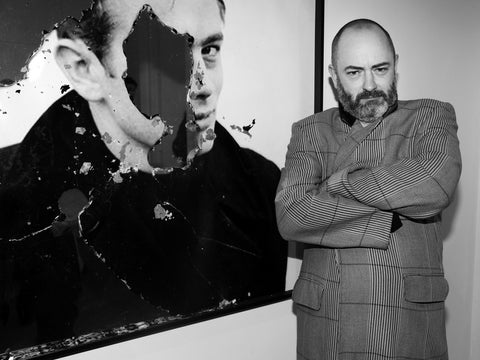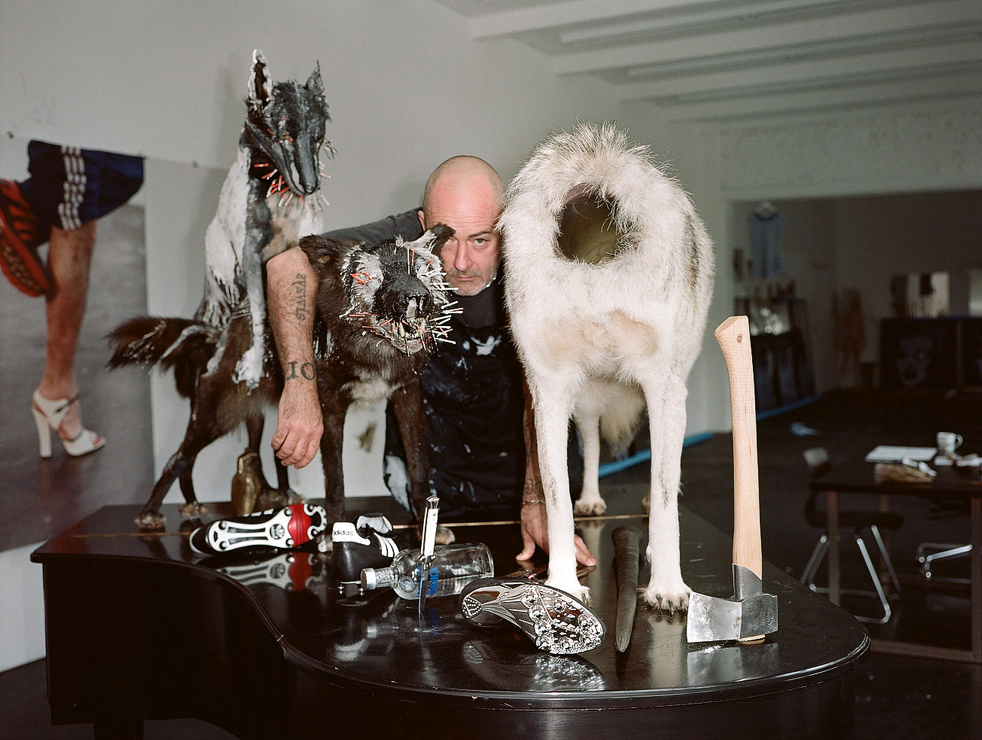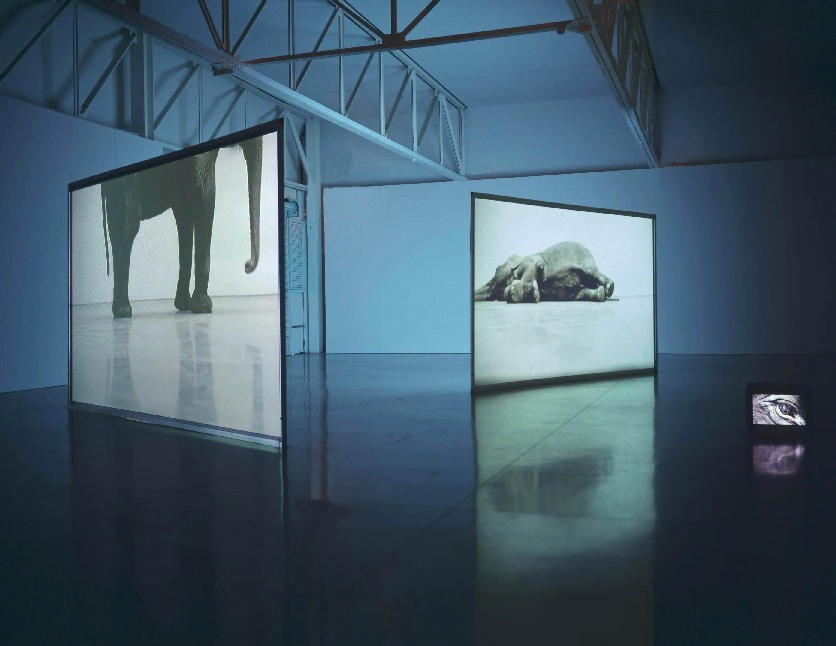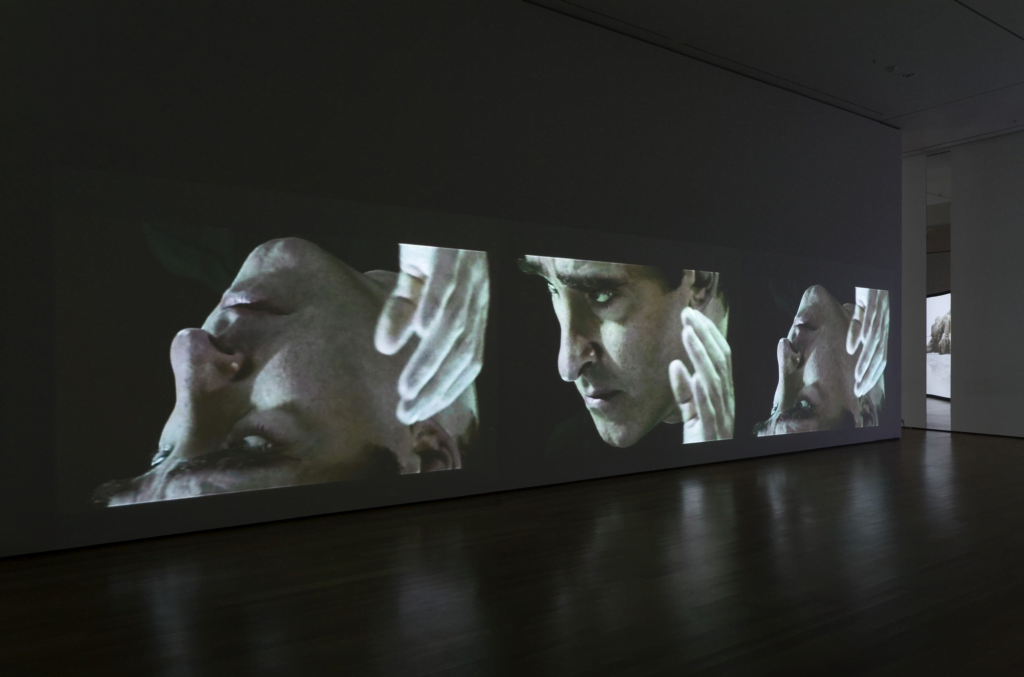Memoriesforart » Artists » Douglas Gordon

More Facts
Name: Douglas
Surname: Gordon
Lives & Works: Glasgow
Lives in State: West Central
Nationality: Scotland
Date of Birth: 1966
Period: Post-War
Movement: Young British Artists
Table of Contents
As an art lover, you may have encountered the striking and thought-provoking works of conceptual artist Douglas Gordon. His innovative multimedia installations and video art have captivated audiences worldwide for over 30 years. Gordon’s work provides a glimpse into human consciousness and explores time, memory, and identity themes.
Though his works are deeply philosophical and often unsettling, Gordon’s art invites you to embark on a journey of self-reflection and see the world through a different lens. His memorable and evocative pieces will continue to shape conversations about art and the human experience for future generations. Gordon’s life and artistic career demonstrate the power of one person to change how we understand ourselves and the world around us.
In this comprehensive biography, you will trace Gordon’s artistic journey from his beginnings as a student at the Glasgow School of Art in the 1980s through his rise to prominence as a leading figure in contemporary art. You will gain insight into his creative process and the experiences shaping his vision. Gordon’s pioneering style has influenced generations of artists and redefined video and installation art boundaries. It is the story of a true innovator and his timeless contributions to contemporary art.

Douglas Gordon was born in Glasgow, Scotland in 1966. From an early age, Gordon demonstrated an aptitude for art. Gordon’s formative years were spent in Glasgow, where he attended the Glasgow School of Art. He initially studied painting but soon became interested in film and video. Gordon earned his Bachelor of Arts in Fine Art in 1988.
After graduating, Gordon travelled to New York City, where he was exposed to a vibrant contemporary art scene. The experience proved formative for the young artist. Gordon returned to Glasgow, but his work was increasingly influenced by themes of memory, identity, and popular culture that he observed in New York.

Douglas Gordon is an influential contemporary artist known for his thought-provoking video installations and conceptual photographs. His works explore themes of time, memory, and human consciousness in creative and unconventional ways. Gordon’s innovative and genre-defying art has cemented his status as a pioneer in the contemporary art world.

In the early 1980s and 1990s, Gordon began working earnestly with film and video. Gordon’s seminal works from this period demonstrate his talent for manipulating and subverting found film footage to create poignant meditations on human consciousness and perception. His unorthodox and thought-provoking approach to film established him as a leader of the “Young British Artists” movement and secured his status as a renowned conceptual artist.
In the following decades, Gordon created many memorable installations and won prestigious awards, cementing his position as one of the most influential multimedia artists of his generation. His groundbreaking early works remain touchpoints for discussing film, memory, and identity in contemporary art.
By the end of the 1980s, Gordon had pioneered a conceptual art form using film and video to tackle profound ideas in an accessible way. His innovative and thought-provoking works established him as a leading figure in contemporary art, gaining him international recognition and acclaim.
|
1988 |
“Confessions of a Justified Sinner” |
He juxtaposed footage from a reenactment of a 19th-century Scottish murder with dream sequence footage, suggesting the instability of memory and the human mind.
|
|
1993 |
24 Hour Psycho |
He slowed down Alfred Hitchcock’s iconic film Psycho to play over the course of 24 hours. Viewers reported entirely new insights and interpretations from the radically decelerated film. |
|
1994 |
“Pretty Much Every Bad Thing” |
He excerpted footage of Kurt Cobain from Nirvana’s “Smells Like Teen Spirit” music video, looping and distorting it to make a haunting meditation on fame and youth culture. |

Gordon’s 1990s oeuvre established him as a pioneer in manipulating video and film to explore human consciousness and perception in innovative ways. His unsettling and thought-provoking works gained acclaim in the contemporary art world’s leading circles, cementing his status as a master of conceptual media art. Gordon’s 1990s breakthrough success ushered in a highly acclaimed and influential career spanning decades.
|
1996 |
Between Darkness and Light |
It featured two large freestanding screens in a completely dark room. On one screen appeared a man, on the other a woman, each recounting a disturbing tale of personal anguish. |
|
1996 |
Hysteria |
He distorted and abstracted footage of a woman in a hypnotic state |
|
1999 |
Through a Looking Glass |
He combined a live closed-circuit video feed with a pre-recorded video in disorienting fashion. |
|
2003 |
Play Dead; Real Time |
It was a video installation featuring elephants in a game reserve in South Africa. Gordon filmed elephants “playing dead” – lying motionless on their sides, as elephants sometimes do. |
|
2003 |
Represented Scotland in the Venice Biennale |
|
2006 |
He was allocated as Officer of Order of British Empire (OBE) for arts. |
|
2009 |
A major retrospective of Gordon’s work opened at New York’s Museum of Modern Art (MoMA). |
|
2011 |
This exhibit at the Tel Aviv Museum of Art incorporated found footage, musical scores, and texts to create a “fluid memoir” reflecting on childhood, relationships, and mortality. |
|
1996 |
Prestigious Turner Prize |
|
1998 |
Hugo Boss Prize |
|
2004 |
Roswitha Haftmann Prize |
Gordon’s art has been featured in numerous recent exhibitions, including solo shows at:
Museum of Contemporary Art in Chicago
National Galleries of Scotland
His works explore themes of memory, identity, and popular culture through film, video, photography, and text.
Douglas Gordon draws inspiration from various sources in his creative process. One of the critical influences on Gordon’s work is cinema. He often explores identity, memory, and time themes, drawing inspiration from classic films and directors such as Alfred Hitchcock and Martin Scorsese. He is particularly interested in the power of cinema to manipulate perception and challenge conventional narratives.
Another primary source of inspiration for Gordon is music. He has collaborated with musicians and composers, incorporating sound and music into his installations and performances. Music allows him to explore art’s emotional and sensory aspects, adding another layer of meaning to his work.
Gordon also draws inspiration from literature and philosophy. He is interested in exploring existential questions and the human condition. Through his art, he seeks to provoke thought and engage viewers in a dialogue about fundamental questions of life.
Over the past three decades, Gordon has established himself as one of the preeminent contemporary conceptual artists. His pioneering and influential work with film and video helped legitimize these mediums in the art world. Gordon’s art is characterized by its reflective nature, dark humour, and ability to move audiences unexpectedly.
Gordon’s daring and thought-provoking creations have inspired generations of conceptual artists to push the boundaries of their craft. Although his work can be enigmatic or unsettling, Gordon’s art poses profound questions about human existence that remain relevant long after experiencing it.
Douglas Gordon is a seminal figure in contemporary art whose innovative films, videos, and installations have shaped visual culture. His pioneering use of film and unflinching exploration of existential themes have established him as an enormously influential conceptual artist with a lasting legacy. Gordon’s impact on contemporary art must be balanced. His groundbreaking and genre-defying work will continue to provoke audiences for generations.